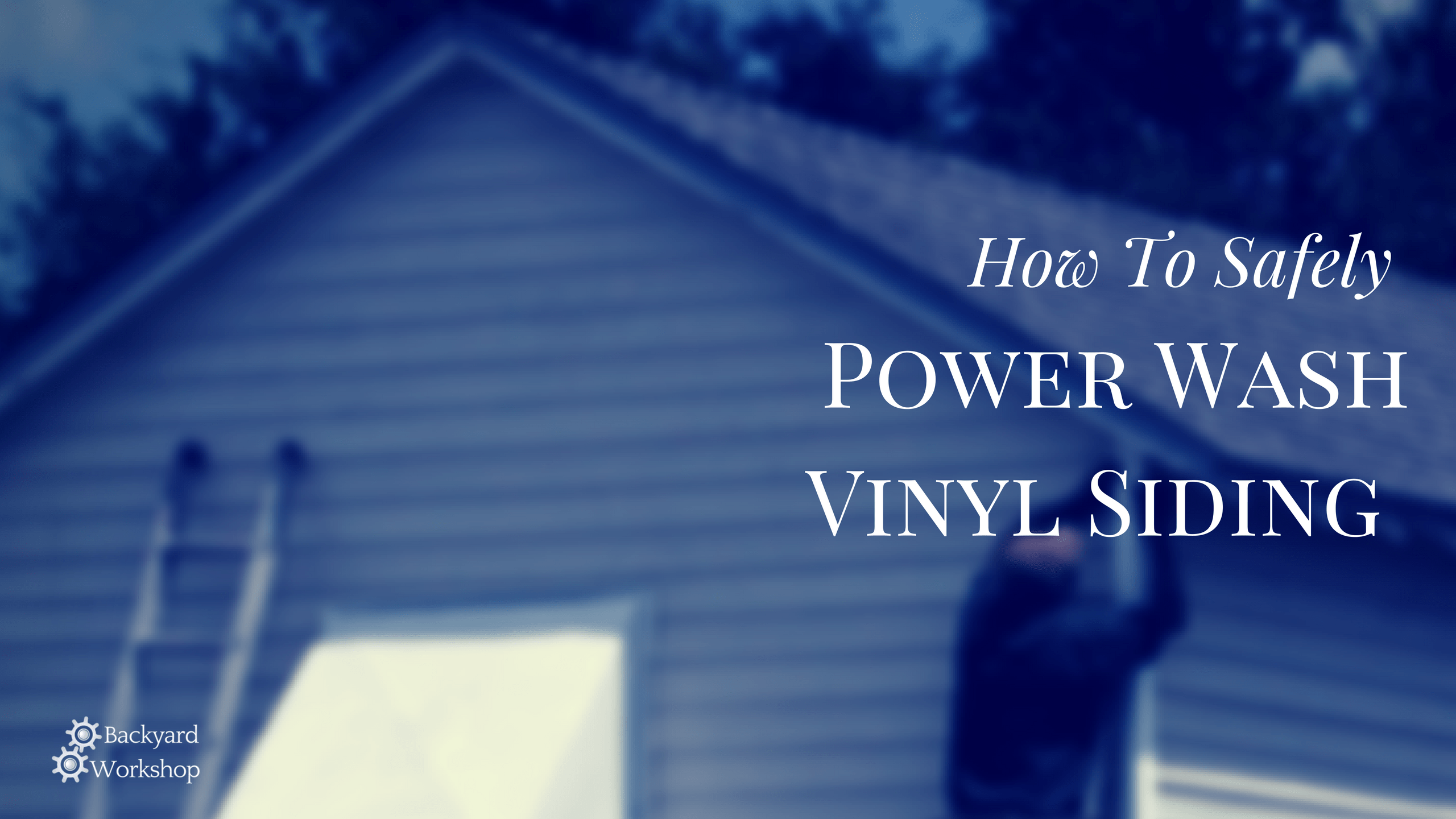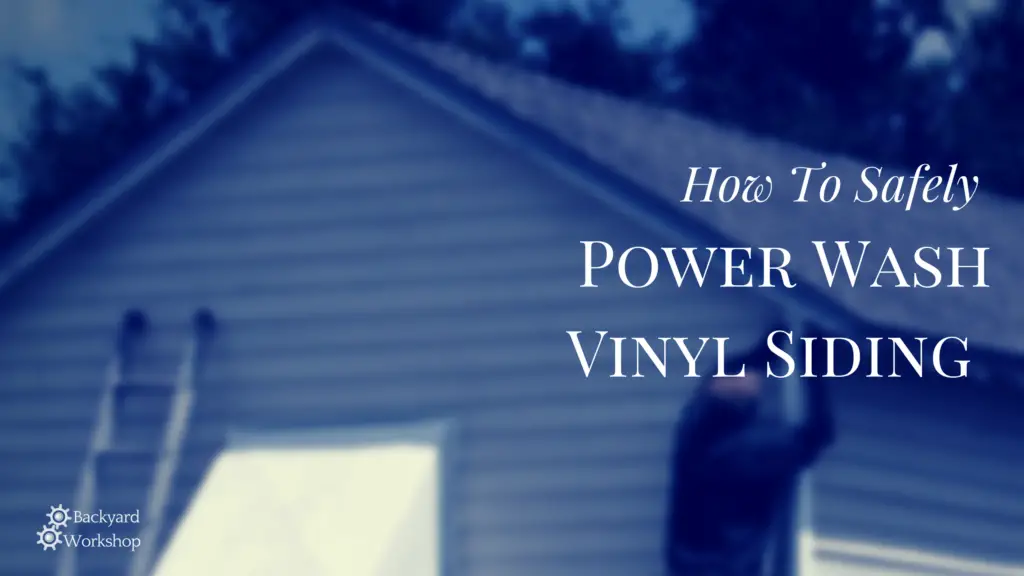How To Safely Power Wash Vinyl Siding


We’ve all been there – after a long hot summer the siding on our house can look like it’s never been washed off. Bird “bombs”, pollution, sap and other messes can take their toll on your vinyl siding. But to tackle such a large job, you’re going to need mechanical help.
That’s where a power washer comes in.
Yes, you can use a pressure washer to safely clean vinyl siding on your house. Read on to learn more.
Steps To Pressure Wash Vinyl Siding Quickly and Safely
When power washing vinyl siding, there are several things to take into consideration before breaking out the pressure washer. Improper washing can harm your siding. Checking the siding on all sides of your house for wear and oxidation is important, as well as identifying the offending dirt. Bird droppings, algae, mildew and mold can be eradicated easily by using the right products. Wear eye protection and a dust mask to avoid inhaling debris or cleaner and getting stuff in your eyes. Put on rain gear to protect your skin and clothing from the cleaning agents. Rinse your gear off afterward and allow to dry.
Inspect the Vinyl Siding
Inspect each area of your house’s siding to see if it is damaged in any way. Some areas will get more sunlight, while others will remain moist for longer periods of time. Look closely around windows and doors to make sure seals are tight. If any areas appear chalky, keep a lower pressure on the wand to avoid damaging the siding. Once clean there are products that can restore luster to vinyl, but that counts as a separate project. Any loose siding should be repaired before power washing.
Prep
Move anything in the yard that is near the house at least 10 feet away to avoid sending lawn chairs or garden tools flying about if the spray goes astray. Hoses should be disconnected and set aside. Since most homes have some landscaping along one or more sides, it is a good idea to water it ahead of time to keep it from absorbing too much of the cleaning products. If you are using bleach or vinegar, or do not know how a cleaner will affect your plants, go ahead and cover them with a plastic tarp.
Product Selection
There are many products available for cleaning vinyl siding. It is important to read the label to ensure it is safe for vinyl siding and not just wood or aluminum siding. Simple Green® has a product specifically for siding. If your siding has a lot of mold or algae, get the one with oxidized bleach. Krud Kutter® is another popular cleaning product. They have many cleaners under that name, so be sure to choose the one specifically for pressure washing vinyl siding. The big hardware stores may also carry their own brands of siding cleaner. Whichever cleaner you choose to use, read all of the instructions and follow them carefully.
Do it Yourself
Some people want to use a more natural approach, or at least save a bit of money by making their own cleaner. One environmentally friendly solution is to use the following: Mix ¼ cup laundry detergent with ½ cup of baking soda in 2 cups of warm water until dissolved. Then stir in ¼ cup of household vinegar. This solution can be poured into the reservoir of the pressure washer. You will still want to make sure that the siding is rinsed off with fresh water before the cleaner can dry onto the surface. Vinegar is great for killing mold and algae but if you have a really bad case of mold, the vinegar can be replaced with 2 tablespoons of household bleach. Never use bleach undiluted for washing. It only takes a little bit to get the job done.
How much Pressure?
When using a pressure washer to clean vinyl siding, there is no need to use the maximum amount of pressure available on the washer. 1000 to 1400 psi should be plenty of power. Start lower and increase as needed to remove dirt, mold, algae or bird droppings. There are different nozzles available for applying the cleaning solution and rinsing. If you are renting a pressure washer, ask the dealer about which ones are best to use. The nozzles have different angles that increase or decrease the power of the spray. Use a black-colored 65-degree low-pressure nozzle for applying the detergent. Use a green-colored 25-degree nozzle for the actual cleaning and rinsing. Test in an inconspicuous area first, to make sure your siding can handle it. If the nozzles available are not color coded, look at the spray angles to determine the strength. The smaller the spray angle number is, the stronger the spray. Turn the washer off before changing the nozzle.
Technique
Spray straight ahead at eye-level, making sure you do not spray upwards and get moisture up under the siding. Angle the spray nozzle at a sideways 45-degree angle to the wall to allow the stream to pry off any chunky stuff. Avoid spraying at windows and any painted trim. Pressure washers can be strong enough to remove paint and that may not be a project you want to get started on right away. Plus the water can seep into your home or walls. Rinse each wall before moving onto the next so that the cleaning agents do not have a chance to dry on the wall. This could cause discoloration. Here is a video that demonstrates the basic technique.
Going Up?
If there is a second story on the home you are washing, be sure to use a ladder that is tall enough so that you can maintain the nozzle at a distance of about 2 feet from the side of the house. Don’t try to spray upwards from below. A strong spray can loosen the siding if sprayed from a low angle.
Resource list
https://www.doityourself.com/stry/how-to-make-a-vinyl-siding-cleaner
https://www.diynetwork.com/how-to/rooms-and-spaces/walls-and-ceilings/how-to-clean-vinyl-siding
https://www.mitm.com/support/videos/how-to-choose-the-right-pressure-washer-nozzle/


It’s good to know that you shouldn’t use the maximum amount of power when washing your siding. My wife and I are wanting to clean our house before my parents come to visit and we were wondering how to power wash our house. I’ll be sure to tell her that maximum power shouldn’t be used when cleaning the siding.
Thanks Frank!